Research Summary: Effects Of Nutrient Limitation On The Release And Use of Dissolved Organic Carbon From Benthic Algae In Lake Michigan
2In recent years, benthic macroalgae have become increasingly abundant in nearshore areas of the Laurentian Great Lakes, frequently forming nuisance blooms and mats of dead and decaying algae that harbor pathogens such as avian botulism and foul bathing beaches. This increase in macroalgae is thought to be due to increased nutrient concentrations and light levels reaching the bottom because of invasive dreissenid mussels which have effectively removed phytoplankton from the water column (Malkin et al. 2010). The transfer of energy (from pelagic to benthic pathways) associated with accelerated benthic algal production has implications for nutrient cycling and energy flow throughout the entire lake food web. For example, macroalgae may influence heterotrophic metabolism through the release of carbon subsidies during growth and development. Dissolved organic carbon (DOC) released by algae is commonly rich in simple carbohydrates and amino acids (Wyatt et al. 2012), which support the microbial loop across a range of aquatic ecosystems (Bertilsson and Jones 2003). Although there are numerous estimates of carbon fixation by benthic macroalgae in the Laurentian Great Lakes, less is known about: 1) how much of the fixed carbon is released into the water column during normal growth, 2) how this DOC release is affected by environmental conditions, and 3) how DOC supports heterotrophic bacteria.
In this study, we evaluated the effects of nutrient availability on the release, composition, and decomposition of DOC from the benthic macroalga, Cladophora glomerata, in Lake Michigan. This alga is widely distributed throughout freshwaters of the temperate northern hemisphere where it is often associated with eutrophication in nearshore benthic ecosystems (Dodds and Gudder 1992). Cladophora has been an important contributor to the recent increase in benthic primary production in the lower Laurentian Great Lakes (Auer et al. 2010), where production by Cladophora can exceed 400 mg C m-2 d-1 during the summer growing season (Malkin et al. 2010).
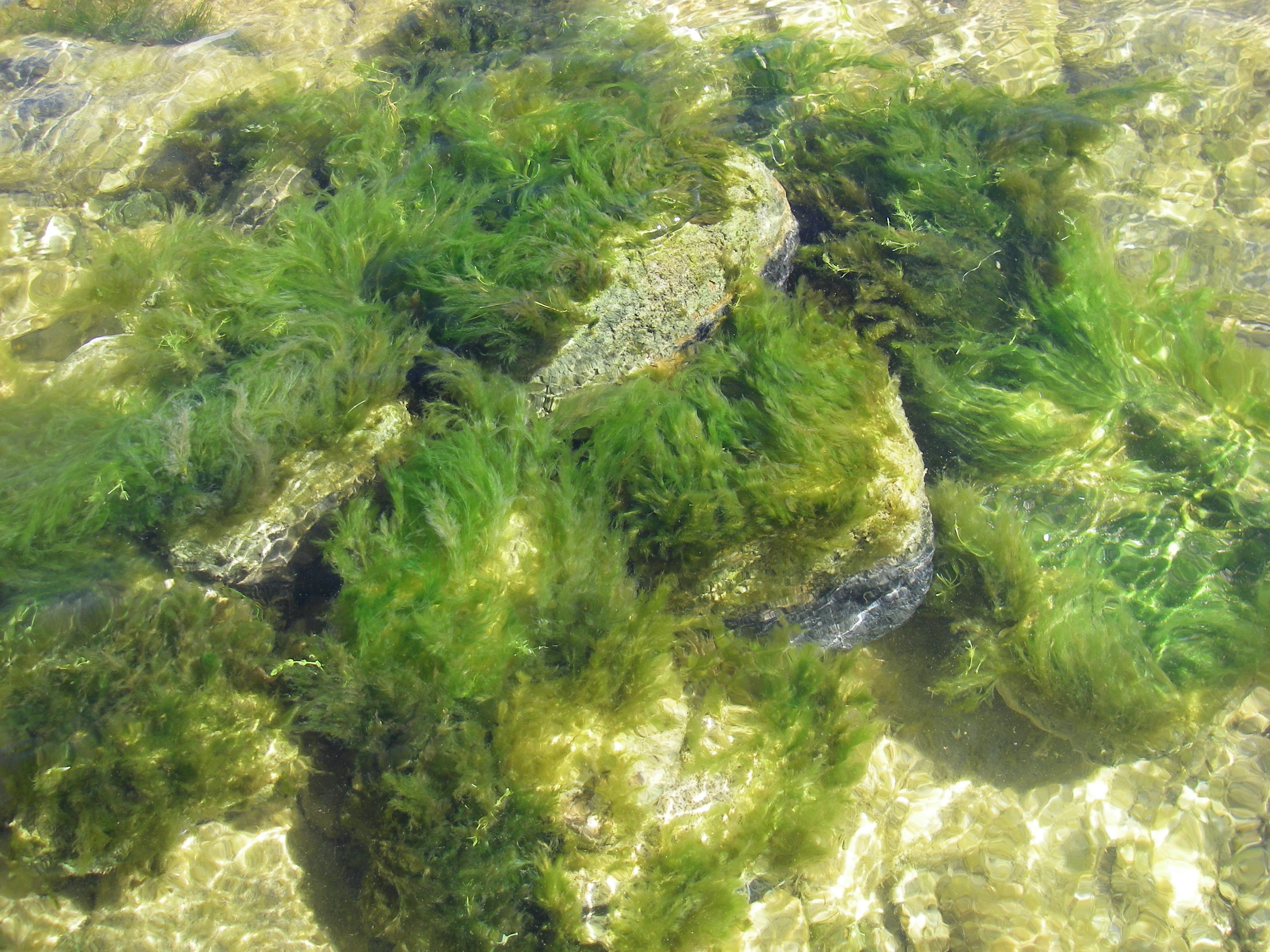
Cladophora glomerata growing attached to rocks. (Credit: Kevin Wyatt)
Methods
Specimens of Cladophora glomerata growing attached to small rocks were collected from Lake Michigan and placed in outdoor glass tanks (115-L) filled with lake water enriched with nitrogen (N) and phosphorus (P) in a full factorial design (un-enriched, +N, +P, N+P) for 10 days. Six replicate tanks were used for each treatment, for a total of 24 experimental tanks. After 10 days in experimental conditions, we removed algal material from 4 substrates inside each tank for measures of algal production and biomass-specific exudate release. In the laboratory, we collected exudates from algal material grown in the +N and N+P treatments (DOC+N and DOCN+P, respectively) to evaluate degradation patterns of algal exudates at each end of the nutrient spectrum. We incubated the cultures in the dark and the temperature was kept constant throughout the experiment. We sampled flasks at 0, 2, 4, 8, 13, and 19 days for measures of SUVA254, DOC, and bacteria abundance.
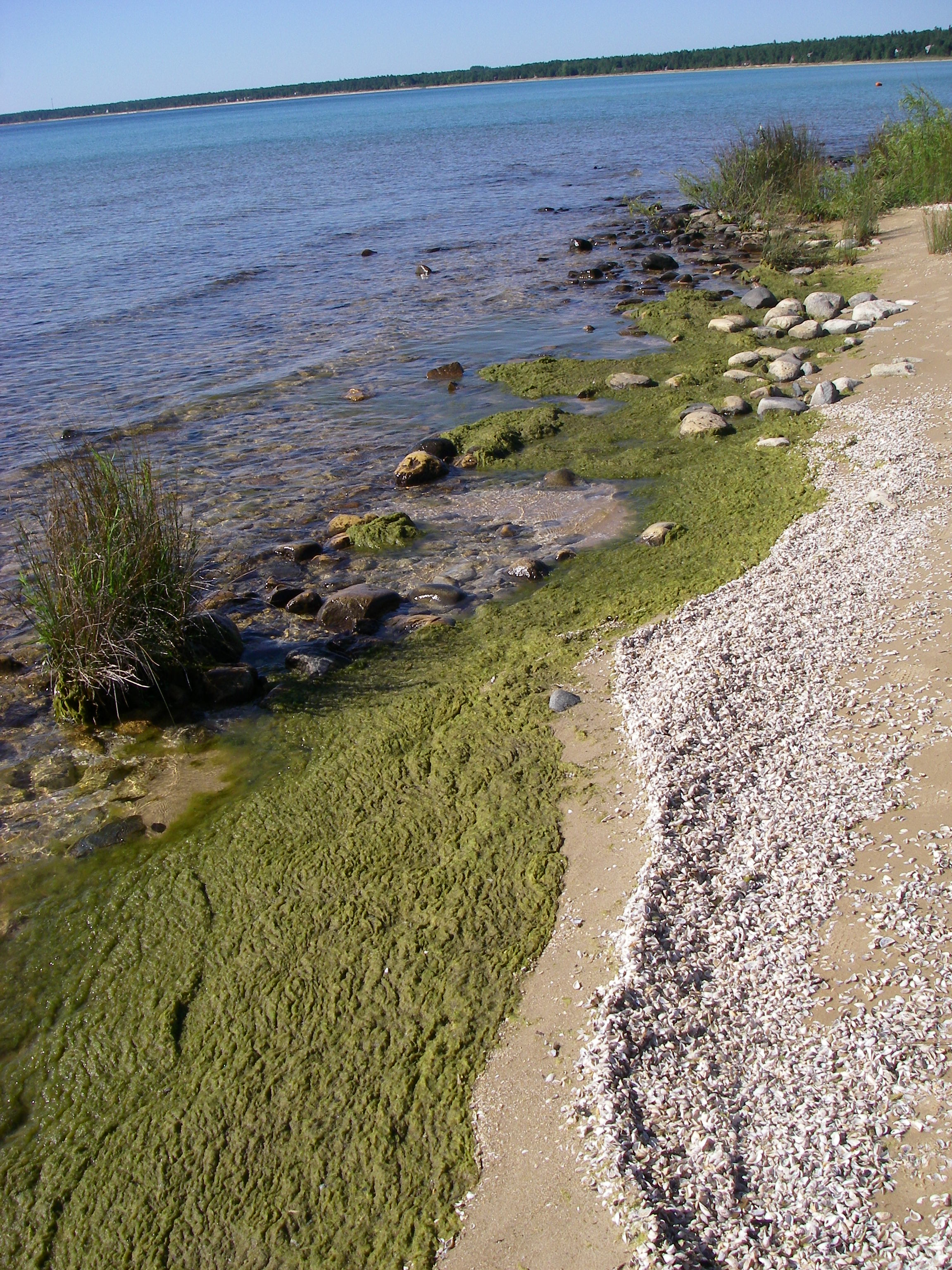
Cladophora glomerata washed onto a Lake Michigan shore. (Credit: Kevin Wyatt)
Results
As anticipated, enrichment with N+P increased gross primary productivity (GPP) more than individual nutrient treatments. The fraction of fixed carbon released as DOC was approximately 37% of GPP in the N+P treatment, which was to that of material collected from the lake at the start of the experiment. Biomass-specific rates of DOC release did not vary significantly with treatment, whereas GPP declined in treatments without nutrient addition or unbalanced nutrient supply (+N, +P). Consequently, DOC release represented a higher percentage of GPP (>100%) under severe nutrient limitation. Specific UV absorbance, an indicator of aromatic compounds, indicated that DOC from material grown in the N+P treatment (DOCN+P) was more labile than DOC from the +N treatment (DOC+N). Both DOCN+P and DOC+N supported an exponential increase in bacterial density during a 19-day incubation, but DOCN+P was used more rapidly and supported higher bacterial density than DOC+N.
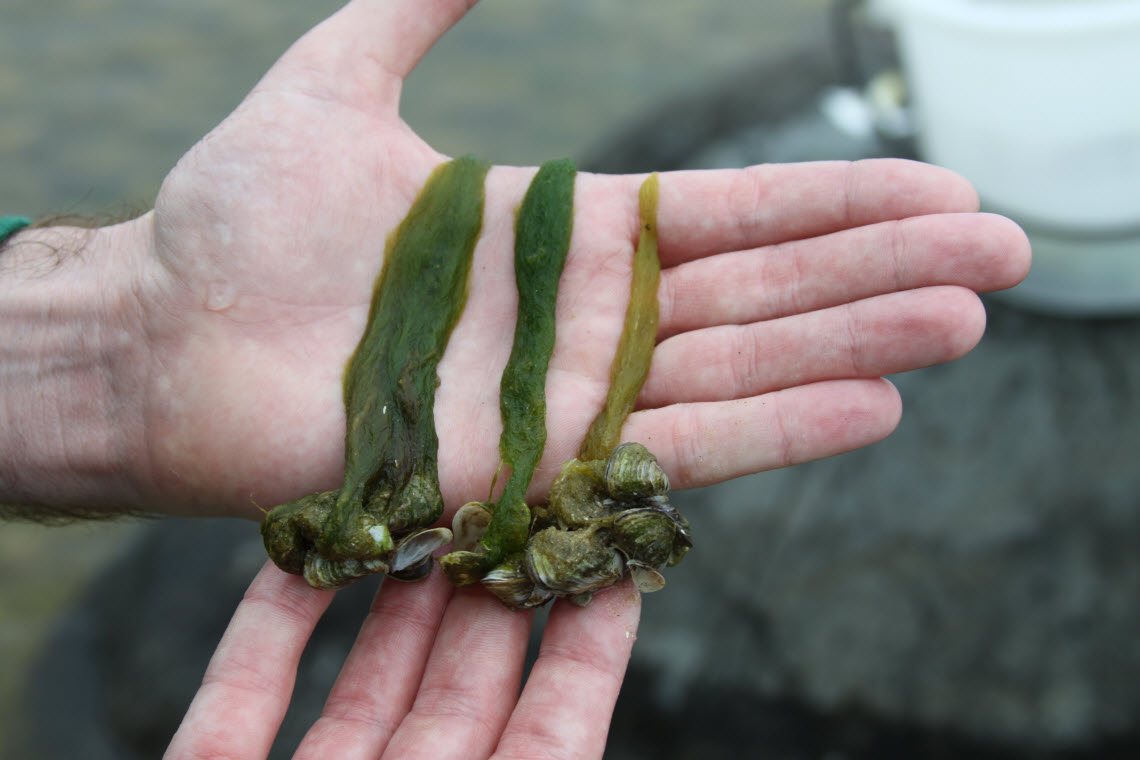
Dreissenid mussels attached to Cladophora glomerata. (Credit: Kevin Wyatt)
Conclusions
Cladophora has become a major contributor to primary production in the shallow near-shore regions of the lower Laurentian Great Lakes and our data suggest that at least a 1/3 of this productivity is available for the benthic microbial loop as DOC during normal growth. Although nutrients affect GPP, interestingly the biomass-specific release of DOC was unaffected. However, the nutrient status of the alga affects the quality of DOC as a substrate for heterotrophic bacteria. Algal exudates can also form complexes with toxic metals such as copper and lead (Alldredge et al. 1993, Zhou et al. 1998) and may be important for the transfer of these metals to sediments and to the food web if consumed by zooplankton or other organisms (Giroldo and Vieira 2002). Alteration of the microbial loop through changes in substrate quality and biogeochemical cycling associated with metallic complexes are likely important outcomes of the increased benthic primary production in the Laurentian Great Lakes.
Full study published in Society for Freshwater Science, April 2014.
Selected References
- Alldredge, A. L., U. Passow, and B. E. Logan. 1993. The abundance and significance of a class of large, transparent organic particles in the ocean. Deep-Sea Research 40:1131–1140.
- Auer, M. T., L. M. Tomlinson, S. N. Higgins, S. Y. Malkin, E. T. Howell, and H. A. Bootsma. 2010. Great Lakes Cladophora in the 21st century: same algae – different ecosystem. Journal of Great Lakes Research 36:248–255.
- Bertilsson, S., and J. B. Jones, Jr. 2003. Supply of dissolved organic matter to aquatic ecosystems: autochthonous sources. Pages 3–24 in S. E. G. Findlay, and R. L. Sinsabaugh (editors). Aquatic ecosystems: interactivity of dissolved organic matter. Academic Press, San Diego, California.
- Dodds, W. K., and D. A. Gudder. 1992. The ecology of Cladophora. Journal of Phycology 28:415–427.
- Giroldo, D., and A. A. H. Vieira. 2002. An extracellular sulphated fucose-rich polysaccharides produced by a tropical strain of C. obovata (Cryptophyceae). Journal of Applied Phycology 14:185–191.
- Malkin, S. Y., S. A. Bocaniov, R. E. Smith, S. J. Guildford, and R. E. Hecky. 2010. In situ measurements confirm the seasonal dominance of benthic algae over phytoplankton in nearshore primary production of a large lake. Freshwater Biology 12:2468-2483.
- Wyatt, K. H., M. R. Turetsky, A. R. Rober, E. S. Kane, D. Giroldo, and R. J. Stevenson.2012. Contributions of algae to GPP and DOC production in an Alaskan fen: effects of historical water table manipulations on ecosystem responses to a natural flood.Oecologia 169:821–832.
- Zhou, J. K. Mopper, and U. Passow. 1998. The role of surface active carbohydrates in the formation of transparent exopolymer particles by bubble adsorption of seawater. Limnology and Oceanography 43:1860–1871.







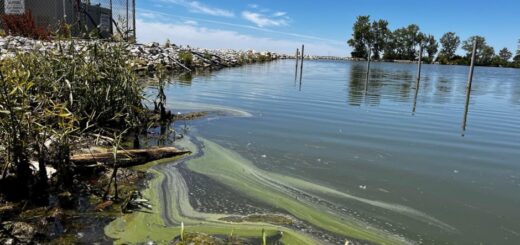

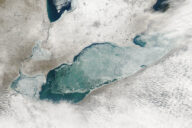




[…] Research Summary: Effects Of Nutrient Limitation On The Release And Use of Dissolved Organic Carbon … […]
[…] Wyatt_Cladophora_image.jpg from: https://www.lakescientist.com/research-summary-effects-nutrient-li… […]